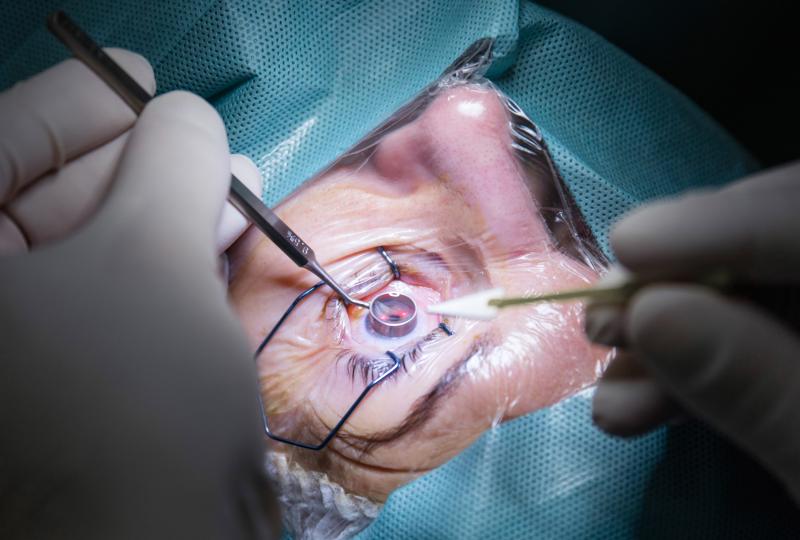 The future of eyesight restoration may come from a most unlikely corneal donor – pigs.
The future of eyesight restoration may come from a most unlikely corneal donor – pigs.High baseline intraocular pressure (IOP) may influence treatment outcomes after selective laser trabeculoplasty (SLT), a recent study has found.
The study included 252 eyes from 198 adult patients (mean age, 69.6±11.2 years; 49.2 percent female) with open-angle glaucoma. SLT success was defined as a ≥20-percent decline in IOP reduction or a drop of at least one medication. The principal outcome was the identification of predictors of success.
Mean IOP at baseline was 17.8±4.4 mm Hg. Patients were taking an average of 2.0±1.3 glaucoma medications before surgery. Two months after surgery, 33.6 percent of the procedures were deemed to be successful. This climbed slightly to 38.5 percent by 6 months. IOP dropped to 16.7±4.3 and 15.2±4.9 mm Hg at the respective time points (p<0.001 for both).
Changes in the average number of medications changed to 1.6±1.3 at 2 months and 2.0±1.3 at 6 months, though none were significant (p=0.709 and p=0.578, respectively).
IOP was the only baseline factor that was significantly affective of SLT success. Those with baseline IOP >18 mm Hg saw a 17.3-percent (3.7±4.2 mm Hg) drop in IOP at month 2, as opposed to a 4.9-percent (–0.7±5.6 mm Hg) increase in those with baseline IOP ≤18 mm Hg.
This pattern persisted until 6 months. Participants with high baseline IOP saw a mean 2-month drop of 23.7 percent, as opposed to a 4.9-percent increase reported in those with low IOP at baseline (p<0.001). Baseline IOP was not related to changes in the mean number of medications.